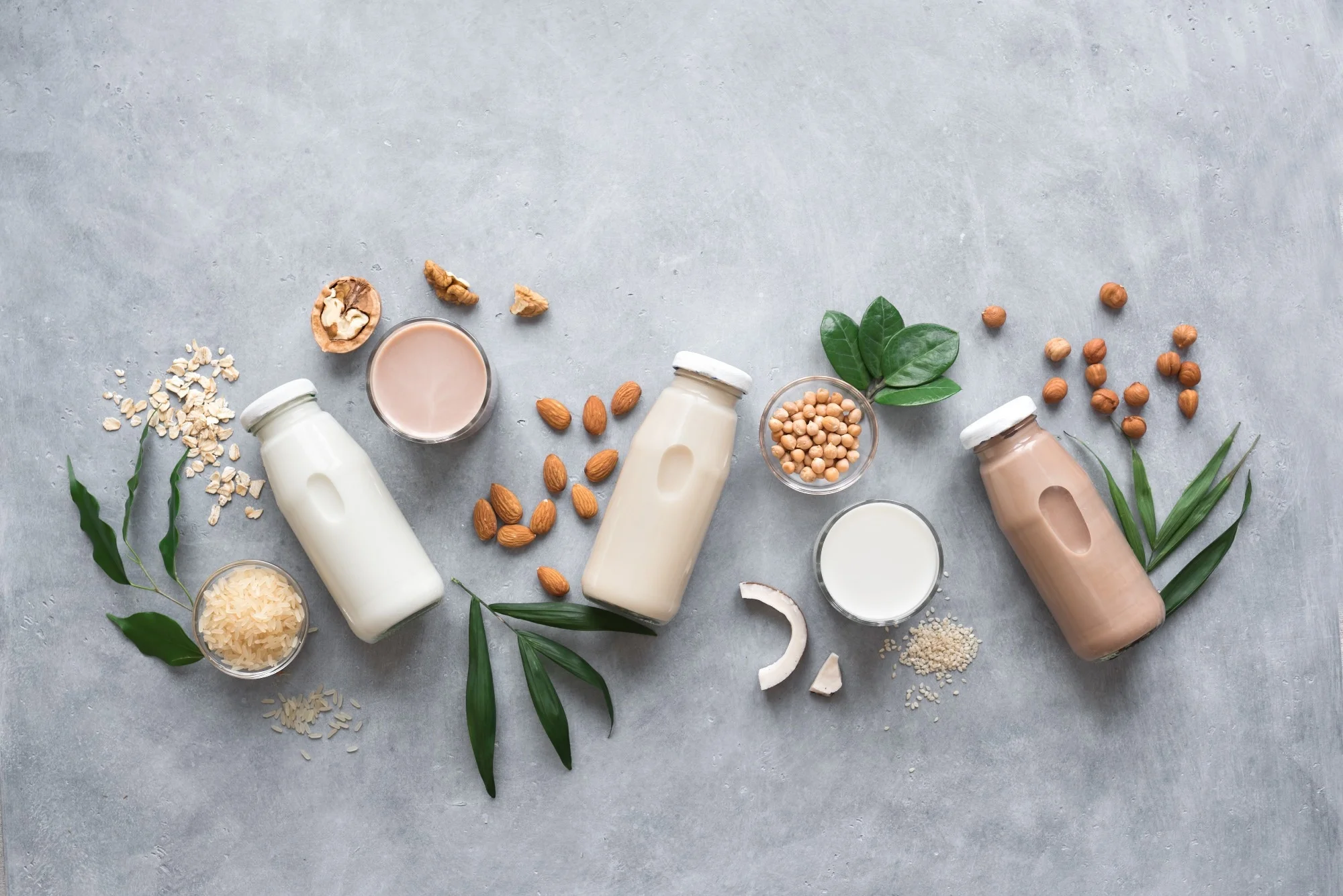Milk is a colloidal dispersion of proteins such as casein, and whey proteins. These proteins are either heat sensitive or pH sensitive and sometimes both, depending upon the pH and temperature and its constituent elements along with the presence or absence of microorganisms. It is very nutritious as it contains valuable protein and minerals such as calcium. Unlike plant-based milk analogues, natural milk lacks dietary fiber (DF) and shows high bioavailability of the nutrients (Arora, 2023a). Dietary fibers (DF) are the essential constituents of the plant-based foods as they provide structure, shape and rigidity to the plant cells and tissues. They are lately known to prevent the occurrence of various diseases including constipation, hiatus hernia, oesophageal, intestinal, rectal, prostrate and breast cancers. However, the consumption level of DF is declining among the consumers globally
(Arora et al., 2015). Fortification of milk with DF posed problems towards its sensory properties including consistency, appearance, sedimentation and taste.
The soluble DF increases viscosity of the product to gel-like consistency while insoluble DF shows settling and high sedimentation (Arora, 2024b). Due to the presence of DF and some anti-nutritional factors, plant-based food are associated with lower bioavailability of nutrients (Arora, 2024). Hence, there are chances that the bioavailability of milk protein and milk calcium may get adversely affected by the added DF from the plant source.
As a researcher, I undertook numerous studies and spent more than 3 years to develop blends of DF to incorporate into sweetened milk without adversely affecting its sensory and rheological properties. After initial trials of screening, selection and characterization of commercially available rich sources of DF, planned trials were undertaken to optimize the levels of the selected DF preparations to fortify sweetened milk.
The developed blend comprising a mix of Inulin, Psyllium husk, Microcrystalline Cellulose, and Oat Fiber provides 13.1 g DF per 240 mL serve of sweetened milk and thus, the fortified milk can be labeled as dietary fiber” (FDA, 2013). While the taste, and colour of fortified milk remain unaffected with the developed formulations, viscosity, mouthfeel and sedimentation was quite acceptable. With the addition of DF blends, the fortified milk showed very high heat stability (>88) as indicated by the alcohol index test. The fortified milk carries the goodness of plant-based DF as well as the nutritive quality of milk. Through in-vivo trials the bioavailability of calcium and protein of the fortified milk was also established. The optimized DF blend with the mix of the selected four DF sources do not cause any negative effect on true protein digestibility and calcium bioavailability of milk (Arora and Patel, 2019; Arora, 2023b). Consumer can have the product on-the-go while enjoying the taste & mouthfeel.
This will help them to harness the nutrition and health properties of DF & milk together without the need of chewing as this is a drinkable format of consuming both soluble as well as insoluble DF. The multiple sources of DF such as psyllium, inulin, MCC, oat and wheat fiber made the fiber content of milk and milk products more complete from the functionality point of view.
Further extension and impact of the research findings: With the utilization of DF-fortified milk, different dairy products can be developed. Such two popular milk-based products namely, yoghurt and
kheer (a rice-based milk pudding) have been developed using the fortified milk Arora and Patel, 2015; Arora and Patel, 2017; Arora and Patel, 2011). It was found that the two products can be developed successfully by increasing the total milk solids in certain proportion with increase in DF level. A 200 g serving of fiber fortified yoghurt contains 12g DF, providing 30% of Indian RDA values with a claim of “Rich/High-in-Fiber”.
Kheer was developed with a novel approach of blending together the liquid/cream phase with DF with the particulate/ rice phase. Due to the fortification of liquid phase with DF, the fiber fortified
kheer could be developed with 38% reduced-fat with acceptable sensory quality.
With the rising dairy industry, such value-added dairy products are desirable for the youth to venture into startup and entrepreneurship (Arora, 2022) and to boost the national health as well as economy.
Simran Kaur Arora
Assistant Professor, Deptt. Food Science & Technology, G. B. Pant University of Agriculture and Technology, Pantnagar, Udham Singh Nagar, Uttarakhand, India-263145)
Division of Dairy Technology, National Dairy Research Institute, Karnal Haryana, India-132001
References
FDA. Food and Drug Administration Appendix B: additional requirements for nutrient content claims. Guidance for Industry: A Food Labeling Guide. 2013
Arora SK and Patel AA. In vivo Effect of Two Different Dietary Fiber Blends on the Milk Calcium Bioavailability.
Journal of Food Science and Technology. 2019;56(4):2126-2133.
Arora SK and Patel AA. Development of Fiber-fortified Rice Kheer. International Conference on Functional Dairy Foods, NDRI, Nov 16-19, 2011 p.68-69
Arora SK. Should plant-based extracts be called milk? An opinion. Letter to Editor.
International Journal of Dairy Technology. 2023a;76(3):720-720.
Arora SK. Does Mix of Plant-based Dietary Fibres Affect Milk Protein True Digestibility?: An
in-vivo Study.
International Journal of Dairy Technology. 2023b;76(4):844-850
.
Arora SK. The Unregulated Plant-based ‘Milk’ Industry: A Threat to Nutrition, Health and Safety?
International Journal of Dairy Technology. 2024a Article DOI: 10.1111/1471-0307.13117.
Arora SK.
Effect of processing parameters on the gelation and sensorial characteristics of psyllium husk. International Journal of Agricultural Sciences2024b
Arora SK. The Rising Indian Dairy. Indian Food Industry
. 2022;4(1):11- 14.
Arora SK, Patel AA and Chauhan OP. Trends in Milk and Milk Products Fortification with Dietary Fiber.
American J Advanced Food Sci Techno. 2015;3(1):14-27.
Arora SK and Patel AA. Effect of Fiber Blends, Total Solids, Heat Treatment, Whey Protein Concentrate and Stage of Sugar Incorporation on Dietary Fiber-Fortified
Kheer. Journal of Food Science and Technology. 2017;54(11):3512–3520.

